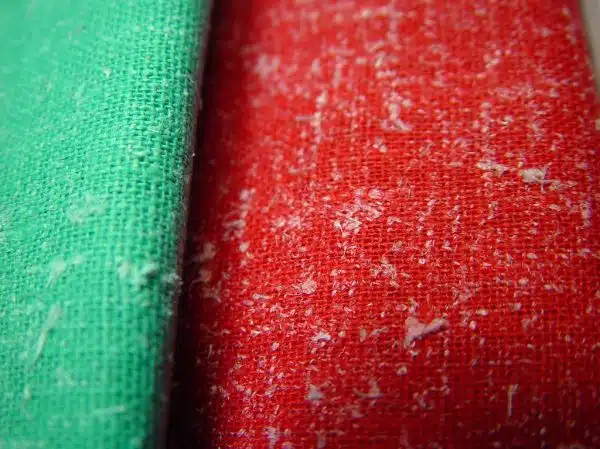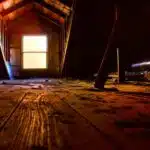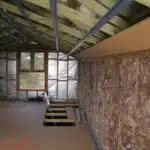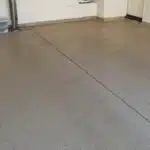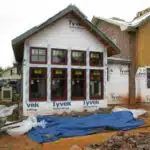Asbestos insulation is a type of insulation that was commonly used in buildings and homes throughout the 20th century. Asbestos was prized for its durability, heat resistance, and fireproofing properties, but it was later discovered that exposure to asbestos fibers can cause serious health problems such as lung cancer, mesothelioma, and asbestosis.
As an expert in the field of asbestos insulation, it is important to educate the public on how to identify asbestos in their homes or workplace. Many people are unaware of what asbestos insulation looks like or where it may be located within their building. Therefore, this article will provide a comprehensive guide on how to identify asbestos insulation and explain why it is crucial to have it safely removed by professionals.
What Is Asbestos?
Asbestos, a naturally occurring mineral, has been an essential component of various construction materials for centuries. Its wide availability and unique properties such as heat resistance, flexibility and durability made it popular among manufacturers. Asbestos mining began in the late 19th century and peaked in the mid-20th century. The global demand for asbestos was so high that many countries including Canada, Russia, China and Brazil became significant producers.
Despite its widespread use in construction materials such as insulation, roofing shingles, floor tiles and cement pipes, asbestos is a known carcinogen. Asbestos-related diseases such as mesothelioma, lung cancer and asbestosis have affected millions of people worldwide. Inhaling asbestos fibers can cause irreversible damage to the lungs leading to respiratory problems.
Asbestos-related illnesses are often fatal with long latency periods of up to 50 years between exposure and diagnosis. Even low-level exposure to asbestos can be dangerous over time. Therefore, it’s crucial to understand the dangers associated with asbestos exposure and take necessary precautions to prevent it from posing a risk to human health.
Understanding The Dangers Of Asbestos
Asbestos insulation is most commonly found in buildings built prior to the 1980s and can be identified by its fibrous texture and grey color. Inhaling airborne asbestos fibers has been linked to illnesses such as asbestosis, mesothelioma, and lung cancer. Regular maintenance of asbestos insulation is essential to minimize the risk of fibers becoming airborne and causing health risks. Prolonged exposure to asbestos fibers can result in serious respiratory problems, so it is important to take all necessary precautions when working with asbestos insulation.
Identifying Asbestos
Asbestos insulation is a common building material used in various structures. While it was once thought to be an ideal solution for insulation needs, we now know that asbestos poses significant health risks. As a result, identifying asbestos is crucial to ensure the safety of those who work with or around it.
One way to identify asbestos is through visual cues. Asbestos insulation typically appears as thick, fibrous material that is often gray or white in color. It can also be found in a variety of forms such as loose-fill, pipe insulation, and spray-on materials. In addition, asbestos may be mixed with other materials like cement or plaster to create a more durable and heat-resistant product.
However, relying solely on visual cues may not always be enough when it comes to identifying asbestos. The only surefire way to determine if a material contains asbestos is through laboratory testing. This involves taking a sample of the suspected material and analyzing it under a microscope for the presence of asbestos fibers.
In conclusion, identifying asbestos requires careful consideration and attention to detail. While visual cues can provide some indication of whether or not a material contains asbestos, laboratory testing is the only definitive method for identification. By taking the necessary steps to identify and remove asbestos safely, we can help protect ourselves and others from its harmful effects.
Health Risks Associated With Asbestos
As an expert in asbestos insulation, it is crucial to discuss the health risks associated with this material. Asbestos exposure can cause various respiratory diseases, including lung cancer, asbestosis, and mesothelioma. These diseases develop over time and often have a latency period of 10-50 years after exposure. Unfortunately, there is no known cure for these illnesses, making prevention of asbestos exposure essential.
Preventing asbestos exposure is crucial in avoiding the health risks associated with this material. This requires proper identification and removal of any asbestos-containing materials in buildings or structures. Failure to do so can result in legal implications for property owners and employers who expose their workers to asbestos without proper protection measures.
In conclusion, understanding the health risks associated with asbestos is vital for ensuring the safety of individuals who work with or around this material. Proper identification and removal are necessary steps in preventing exposure and avoiding legal implications. By taking the necessary precautions, we can protect ourselves and others from the harmful effects of asbestos.
Historical Uses Of Asbestos Insulation
Understanding the dangers of asbestos is crucial in identifying and managing its presence. Asbestos insulation was commonly used in construction and ships due to its heat-resistant properties. It was widely used from the 1920s until the 1970s, when it was finally banned. The use of asbestos insulation declined because it posed a significant risk to health.
Asbestos insulation was usually gray or white with a fibrous texture that resembled wool. It was often mixed with cement or other binders to create a hard, durable product. The appearance of asbestos insulation varies depending on how it’s applied and what materials are used with it. It’s essential to identify asbestos insulation and avoid disturbing it since this can release harmful fibers into the air.
Asbestos insulation in construction consisted of many different materials containing asbestos fibers, such as ceiling tiles, floor tiles, pipe covering, wallboard, roofing, and cement products. Asbestos insulation in ships included boiler rooms, engine rooms, piping systems, and electrical systems. Due to the widespread use of asbestos insulation in these industries, workers who were exposed to it for prolonged periods have developed mesothelioma cancer and other respiratory diseases associated with asbestos exposure.
Moving forward into the next section about how asbestos insulation was made, we will explore the process of creating this hazardous material from raw minerals into finished products that were widely used by various industries. Understanding how asbestos materials were created helps us learn more about how this dangerous substance became so prevalent in our society despite its known health risks.
How Asbestos Insulation Was Made
Asbestos insulation has been a popular material used in construction and manufacturing industries for many years. The manufacturing process of asbestos insulation involves several steps that ensure the final product is of high quality. The first step involves mining the asbestos mineral, which is then transported to a processing plant.
At the processing plant, the asbestos mineral is crushed into fine fibers using specialized machinery. The fibers are then mixed with other components such as cement or vermiculite to form a paste-like substance. This mixture is then molded into various shapes such as sheets or pipes, depending on its intended use.
The composition of asbestos insulation varies depending on its intended use. However, it typically contains between 50-100% of asbestos fibers mixed with other materials such as cement, vermiculite or even fiberglass. Asbestos insulation is known for its excellent heat resistance and insulating properties, making it an ideal choice for applications where high temperatures are involved.
Furthermore, the use of asbestos insulation has been linked to several health hazards such as lung cancer and mesothelioma due to exposure to airborne fibers. Therefore, proper handling and disposal procedures must be followed when dealing with this material.
- Components used in the manufacturing process
- Asbestos mineral
- Cement
- Vermiculite
- Fiberglass
In summary, the manufacturing process of asbestos insulation involves mining of the asbestos mineral, crushing it into fibers at a processing plant, mixing it with other components like cement or vermiculite and molding it into different shapes based on its intended application. It contains between 50-100% of asbestos fibers mixed with other materials like cement or fiberglass. Despite its excellent insulating properties and heat resistance, proper handling procedures must be followed when dealing with this material due to its potential health hazards.
Common Types Of Asbestos Insulation
Asbestos insulation is a hazardous material that was commonly used in buildings and homes until the 1970s. It was prized for its heat-resistant properties and durability, but it also poses significant health risks to those who come into contact with it. Understanding the different types of asbestos insulation is crucial for identifying potential hazards in your home or workplace.
One common type of asbestos insulation is known as sprayed-on asbestos. This type of insulation was commonly used on ceilings and walls as a fire retardant. Sprayed-on asbestos has a fluffy texture, similar to popcorn or cottage cheese, and can be easily disturbed by touch or movement. Another type of asbestos insulation is called pipe covering, which was used to insulate hot water pipes and steam pipes in buildings. Pipe covering typically appears as a gray-white material wrapped around pipes.
A third type of asbestos insulation is known as block asbestos. This material was often used in building foundations and roofing materials due to its high resistance to heat and flame. Block asbestos has a dense, heavy texture, similar to concrete or stone, and can be difficult to distinguish from other building materials without proper testing. It’s important to note that these are just a few examples of the many types of asbestos insulation that were commonly used in buildings before the dangers of asbestos exposure were fully understood.
| Type | Characteristics |
|---|---|
| Sprayed-on Asbestos | Fluffy texture |
| Pipe Covering | Gray-white color |
| Block Asbestos | Dense, heavy texture |
Understanding the characteristics of different types of asbestos insulation is critical for identifying potential hazards in your home or workplace. If you suspect that you may have asbestos-containing materials in your home, it’s important to take action immediately by contacting an experienced professional who can safely remove the material without exposing you or your family to harmful fibers. In the next section, we will discuss some easy steps that you can take to identify potential sources of asbestos in your home.
Identifying Asbestos Insulation In Your Home
Asbestos insulation is a hazardous material that was commonly used in residential and commercial buildings until the 1980s. It is known to cause serious health problems, including lung cancer and mesothelioma. Identifying asbestos insulation in your home is essential for ensuring the safety of you and your family.
There are different identifying techniques for asbestos insulation, but some common characteristics include a gray or white fibrous material with a powdery texture. Asbestos may also be mixed with other materials such as cement, plaster, or adhesives. The insulation may be found in attics, walls, ceilings, pipes, and floors.
If you suspect that your home may contain asbestos insulation, it is important to have it tested by a professional. DIY testing kits are available on the market; however, they are not always reliable and can lead to false negatives or positives. It is best to leave the testing to experts who have the necessary equipment and experience to handle asbestos safely.
Inspecting your home for asbestos is crucial for protecting yourself and others from its harmful effects. In the next section, we will discuss steps on how to inspect your home for asbestos-containing materials (ACMs) and what you should do if you find them. Remember that even small amounts of asbestos can be dangerous when disturbed, so it’s essential to take all precautions necessary when dealing with this hazardous material.
Inspecting Your Home For Asbestos
Asbestos inspection is a crucial step in identifying and mitigating the potential dangers of asbestos exposure. Asbestos, a naturally occurring mineral, was widely used in the construction industry for its heat-resistant properties until it was banned due to its link to lung cancer and other respiratory illnesses. Despite the ban, many homes and buildings still contain asbestos-containing materials (ACMs) which can pose a serious health risk if disturbed.
A DIY approach to asbestos inspection may seem like a cost-effective option, but it is not recommended. Without proper training and equipment, an untrained individual may unknowingly release dangerous fibers into the air while attempting to identify or remove ACMs. It is best to hire a professional who can conduct a thorough inspection using specialized tools like fiber optic scopes and air monitoring devices.
If you suspect that your home or building contains ACMs, it is important to take action immediately. Here are four things you should know about asbestos inspection:
- Visual inspection alone is not enough – ACMs may be hidden behind walls or in hard-to-reach areas.
- Only trained professionals should conduct sampling and testing of suspected ACMs.
- Air monitoring should be conducted before, during, and after any work involving possible ACMs.
- Removing ACMs without proper precautions can pose significant health risks.
With these considerations in mind, it is clear that professional asbestos inspection is the safest and most reliable way to identify potential hazards in your home or building. In the next section, we will explore what exactly asbestos insulation looks like so that you can better understand what to look for during an inspection.
What Does Asbestos Insulation Look Like?
Asbestos insulation is a type of building material that was commonly used in the past due to its excellent insulation and fire-resistant properties. This material is made up of tiny fibers that are woven together to form a dense, durable material. Asbestos insulation can be found in various forms, including pipe insulation, wall insulation, ceiling tiles, and floor tiles.
One of the hazards associated with asbestos insulation is the release of asbestos fibers into the air. When asbestos-containing materials are disturbed or damaged, these tiny fibers can become airborne and pose a health risk to anyone who inhales them. Exposure to asbestos fibers has been linked to lung cancer, mesothelioma, and other respiratory diseases.
To avoid these risks, it is essential to have any asbestos-containing materials removed by a qualified professional. Asbestos insulation removal should only be performed by licensed contractors who have the proper training and equipment to safely remove and dispose of this hazardous material. Homeowners should never attempt to remove asbestos-containing materials on their own as this can lead to exposure and serious health problems.
Moving forward, it is crucial for homeowners and building owners to understand where asbestos insulation is usually found in order to take appropriate action if necessary. In the next section, we will explore common areas where asbestos insulation may be present and what steps you can take if you suspect its presence in your home or workplace.
Where Is Asbestos Insulation Usually Found?
Asbestos insulation can be found in a variety of forms and locations, making it difficult to identify without proper training. One example occurred in a school district where the administration noticed discoloration on pipes and ducts within the buildings. Upon inspection, it was determined that the insulation contained asbestos fibers, which posed a significant health risk to students and faculty.
Common sources of asbestos insulation include:
- Pipe lagging
- Boiler insulation
- Ceiling tiles
- Floor tiles
These materials were widely used in construction throughout much of the 20th century, making them prevalent in many older buildings. When left undisturbed, asbestos is generally not harmful; however, when disturbed through renovation or demolition processes, microscopic fibers can become airborne and pose serious health risks.
Exposure to asbestos has been linked to several serious health effects including lung cancer, mesothelioma, and asbestosis. Symptoms may not appear for decades after exposure and can include shortness of breath, chest pain, coughing up blood, and weight loss. If you suspect that your home or workplace contains asbestos insulation or other asbestos-containing materials (ACMs), it is crucial to call a professional for proper removal to protect yourself and those around you from potential harm.
When Should You Call A Professional For Asbestos Removal?
Asbestos insulation is a type of insulation material that was commonly used in homes and buildings until the late 1970s. It is known for its high heat resistance and durability, making it a popular choice for construction materials. Asbestos insulation can come in many forms, including loose-fill, blown-in, or sprayed-on materials. It typically looks like fluffy white or gray fibers, although it may also be found in other colors such as brown or blue.
If you suspect that your home may contain asbestos insulation, it is important to have it tested by a professional. Asbestos testing involves taking samples of the material and analyzing them for the presence of asbestos fibers. DIY removal of asbestos insulation is strongly discouraged due to the health risks involved. When disturbed, asbestos fibers can become airborne and easily inhaled, leading to serious respiratory illnesses such as lung cancer and mesothelioma.
For these reasons, it is always best to call a professional for asbestos removal. A licensed asbestos abatement contractor will have the necessary equipment and training to safely remove asbestos-containing materials from your home or building. They will also follow strict protocols to ensure that any asbestos fibers are contained during the removal process and properly disposed of afterwards. While DIY removal may seem like an easy way to save money, the health risks are simply not worth it.
In order to protect yourself and your family from the dangers of asbestos exposure, it is crucial to take proper precautions when dealing with potential asbestos-containing materials. This includes having your home tested for asbestos if you suspect that it may be present, as well as calling a professional for any necessary removal work. By taking these steps, you can ensure that your home remains safe and healthy for years to come. In the subsequent section, we will discuss further the importance of proper asbestos removal practices in detail.
The Importance Of Proper Asbestos Removal
Asbestos insulation is a hazardous material which, if disturbed, can release dangerous fibers into the air and cause serious health complications. As such, it is important to seek professional assistance from a qualified contractor when dealing with asbestos removal and disposal. Regulations and standards must also be strictly adhered to in order to ensure that proper removal is conducted. Failure to do so can result in severe health risks and costly fines. Knowledge of the different types of asbestos insulation is also essential to ensure that proper safety measures are taken during removal. Appropriate protective clothing and safety equipment must be used to prevent any potential exposure to asbestos fibers. Finally, all asbestos waste must be disposed of in a way that is compliant with local and state regulations.
Health Risks
As an expert in asbestos insulation, it is important to highlight the potential health risks associated with improper removal of this hazardous material. Asbestos insulation, which was commonly used in construction materials due to its fire-resistant properties, can cause severe lung diseases such as mesothelioma and asbestosis when inhaled over a prolonged period of time. The long-term effects of asbestos exposure can be devastating and irreversible.
Furthermore, it is crucial to understand the legal implications that come with improper asbestos removal. Failing to comply with state and federal regulations regarding the proper disposal of asbestos can result in hefty fines or even legal action. It is essential to hire certified professionals who are equipped with the necessary tools and expertise required for safe and effective asbestos removal.
In conclusion, ensuring proper asbestos removal is critical for protecting both individuals’ health and legal compliance. By hiring certified professionals who follow strict guidelines for safe disposal, we can minimize the risk of long-term health effects and avoid any potential legal complications that may arise from improper handling.
Professional Assistance
With the serious health risks associated with asbestos exposure, it is essential to ensure that asbestos insulation is removed safely and effectively. However, some individuals may consider conducting a DIY asbestos inspection or removal to save on costs. While this may seem like a practical solution, it poses a significant danger to one’s health and safety. Improper handling of asbestos can release harmful fibers into the air, which can cause severe lung diseases when inhaled over time.
The benefits of hiring professional assistance for asbestos removal cannot be overstated. Certified professionals have the necessary training and expertise to handle asbestos materials safely and efficiently. They are equipped with specialized tools and equipment that allow them to remove asbestos without releasing harmful fibers into the air. Additionally, they follow strict guidelines for proper disposal, ensuring that all hazardous materials are handled correctly and disposed of in accordance with state and federal regulations.
On the other hand, taking matters into one’s own hands can result in costly mistakes that pose severe health risks. DIY asbestos inspections or removals may not provide accurate results or effectively remove all hazardous materials from the property. Furthermore, failing to comply with state and federal regulations regarding proper disposal can result in hefty fines or legal action. Therefore, it is crucial to prioritize safety by hiring certified professionals for any asbestos-related work to avoid any potential harm or legal complications that may arise from improper handling.
Regulations & Standards
Regulatory compliance and adherence to industry standards are crucial components in ensuring proper asbestos removal. Federal and state regulations have established guidelines for handling, removing, and disposing of asbestos materials. These regulations aim to protect the public from the harmful effects of asbestos exposure while also safeguarding the environment. Asbestos insulation experts must follow these regulations and adhere to industry standards to ensure that all hazardous materials are removed safely and disposed of correctly.
The Environmental Protection Agency (EPA) has established specific rules for asbestos removal in schools, public buildings, and commercial properties. These regulations require accredited professionals to perform inspections and conduct air monitoring tests before, during, and after asbestos removal work. The EPA also requires that all waste containing asbestos be disposed of in a designated landfill facility that complies with their guidelines. Failing to comply with these regulations can result in significant fines or legal action against both individuals and companies involved in the improper handling of hazardous materials.
In addition to federal regulations, industry standards have been set forth by various organizations such as the Occupational Safety and Health Administration (OSHA) and the National Institute for Occupational Safety and Health (NIOSH). These standards outline best practices for personal protective equipment, engineering controls, work practices, disposal procedures, air monitoring techniques, and more. By following these industry standards, certified professionals can ensure that they provide safe working conditions while effectively removing all hazardous materials from a property. Therefore, it is crucial for individuals or companies seeking asbestos removal services to verify that their chosen contractor complies with regulatory requirements and adheres to industry standards.
Health Risks Of Asbestos Exposure
As an asbestos insulation expert, it is essential to identify the physical appearance of asbestos-containing materials. Asbestos insulation typically comes in two forms: loose fill or rigid board. The loose fill type resembles fluffy white or gray fibers that look similar to cotton candy or attic insulation. The rigid board type appears as flat sheets with a grayish-brown color and a texture similar to cardboard.
Exposure to asbestos poses significant health risks for individuals who come into contact with it. Symptoms of asbestos exposure may not appear immediately, but they can develop over time and worsen with continued exposure. Common symptoms include shortness of breath, persistent coughing, chest pain, and difficulty swallowing. If these symptoms are present, medical attention should be sought immediately.
The legal implications of asbestos exposure are severe, and those found responsible for exposing others to this hazardous material can face significant fines and penalties. Medical treatment options for those exposed to asbestos vary depending on the severity of the symptoms and the extent of exposure. In some cases, chemotherapy or radiation therapy may be required to treat cancerous growths caused by prolonged exposure to asbestos fibers.
As an expert in the field of asbestos insulation, it is crucial to understand the risks associated with exposure and take steps to protect yourself and your family from harm. This includes avoiding any contact with materials containing asbestos whenever possible and seeking professional help if you suspect that you have been exposed. By staying informed about the dangers of this hazardous material and taking necessary precautions, you can help ensure that you remain safe from harm.
Protecting Yourself And Your Family From Asbestos
As an expert in asbestos insulation, it is important to highlight the dangers of this material and the necessary precautions to protect yourself and your family. Asbestos fibers are microscopic, making them invisible to the naked eye. Therefore, it is difficult to identify asbestos-containing materials just by looking at them. However, most asbestos insulation appears as gray or white fluffy material that resembles cotton candy or popcorn.
When dealing with asbestos insulation, it is crucial to wear protective gear such as gloves, goggles, and a respirator mask. This will prevent the inhalation of harmful fibers that can lead to serious respiratory illnesses such as lung cancer and mesothelioma. It is also important to follow safe removal techniques when handling asbestos-containing materials. This includes wetting the material down before removing it and sealing off the area with plastic sheeting to prevent fibers from spreading.
In order to ensure safety for yourself and your loved ones, it is highly recommended that you seek professional help for any asbestos-related issues. This includes inspections and removals performed by licensed professionals who have undergone specialized training in handling hazardous materials. By taking these steps, you can minimize the risks associated with asbestos exposure and protect yourself from its harmful effects.
Asbestos insulation poses a significant threat to human health, but there are alternatives available that can provide similar benefits without the risks. The subsequent section will explore some of these options in detail while providing guidance on how to choose the best alternative for your specific needs.
Alternatives To Asbestos Insulation
Asbestos insulation has been used for many years as a fire-retardant and thermal insulator. However, it is now widely known that asbestos fibers are carcinogenic and can cause serious health problems such as lung cancer and mesothelioma. As a result, the use of asbestos insulation has been banned in many countries.
Fortunately, there are many eco-friendly and cost-effective alternatives to asbestos insulation available today. These alternative materials provide excellent fire protection and thermal insulation without the health risks associated with asbestos. Some of the most popular alternatives include cellulose fiber, fiberglass batts, mineral wool, and spray foam.
To help you visualize these eco-friendly insulation options, here are some characteristics of each material:
- Cellulose fiber: Made from recycled newspaper treated with borates for fire resistance. It is blown into walls or attics to create a dense layer of insulation.
- Fiberglass batts: Made from fine glass fibers woven together into batts that fit between wall studs or ceiling joists.
- Mineral wool: Made from natural rock or slag fibers that are spun into wool-like material to create blankets of insulation.
- Spray foam: Made from polyurethane foam that is sprayed into place where it expands to fill gaps and create an air-tight seal.
In conclusion, asbestos insulation has been a common choice for fire protection and thermal insulation in the past but is now known to be harmful to human health. Fortunately, there are many safer alternative materials available today that provide excellent performance without the risk of disease. By choosing one of these eco-friendly and cost-effective options, you can ensure your building is well-insulated while protecting the health of yourself and others.
Moving forward: The future of asbestos control and prevention involves continued efforts to identify buildings containing asbestos materials, properly remove them, and dispose of them safely. This will require ongoing education for contractors and building owners about the dangers of asbestos exposure as well as effective methods for removal and disposal. With these measures in place, we can create a safer and healthier environment for all.
Moving Forward: The Future Of Asbestos Control And Prevention
Asbestos regulation has come a long way since the deadly effects of the mineral were first discovered. It is ironic that as we continue to progress in our efforts to control and prevent asbestos exposure, its environmental impact still persists. The widespread use of asbestos insulation in buildings and homes has left a lasting legacy on our environment.
Despite the stringent regulations put in place to limit asbestos use, it remains a public health concern. While new constructions no longer contain asbestos, older buildings with asbestos-containing materials pose a risk to occupants and workers. Asbestos abatement procedures have become more commonplace, but their effectiveness cannot be guaranteed due to variations in compliance across different regions.
As an expert in asbestos insulation, I believe that the future of asbestos control and prevention lies not only in enforcing strict regulations but also educating the public about the dangers posed by this mineral. We must work towards finding alternatives to replace existing asbestos-containing products and develop better methods for safe removal and disposal. Only by working together can we hope to mitigate the environmental impact of this toxic substance and protect future generations from its harmful effects.
Conclusion
As an expert in the field of asbestos insulation, it is important to understand the history and dangers associated with this material. While asbestos was once a popular choice for its insulating properties, we now know that it can lead to serious health risks such as lung cancer and mesothelioma.
It is crucial to identify what asbestos insulation looks like in order to properly protect yourself and your family. Common types of asbestos insulation include loose-fill, vermiculite, and pipe wrap. If you suspect that your home or workplace may contain asbestos insulation, it is important to contact professionals for proper removal.
One real-life example of the dangers of asbestos exposure comes from a 2019 case in New York where a man was diagnosed with mesothelioma after years of working with asbestos-containing materials. He later filed a lawsuit against his former employer for failing to provide proper safety measures and training.
Moving forward, it is important for individuals and businesses alike to prioritize safe alternatives to asbestos insulation in order to prevent further harm. By staying informed on the risks associated with this material and taking necessary precautions, we can work towards a safer future.
Image Credits
- “Asbestos Dish Towels – Detail 2” by Asbestorama (featured)

